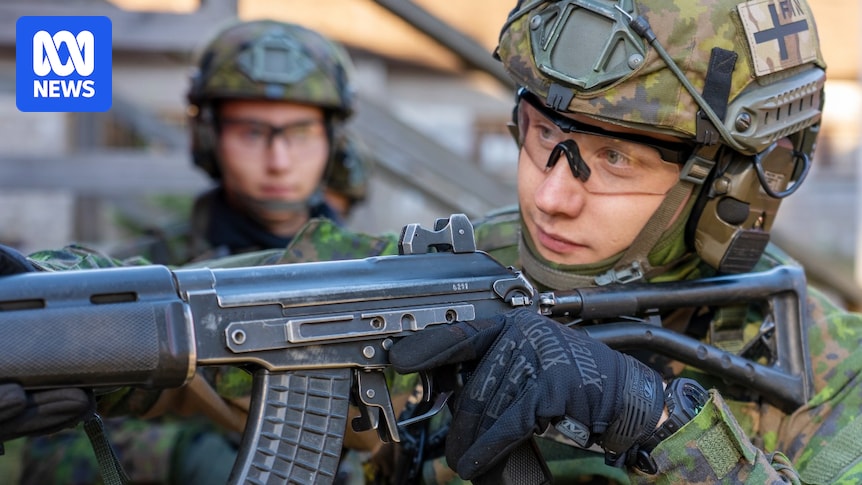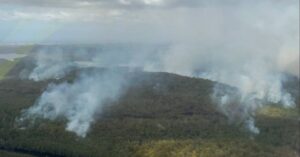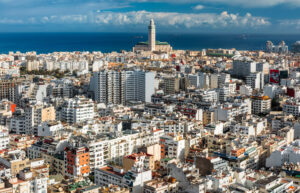
Inside the Nordic nation of Finland, preparations for a potential Russian invasion have been ongoing for decades. Deep beneath the streets of Helsinki, a labyrinth of 5,500 bunkers and tunnels has been blasted into the bedrock, capable of sheltering up to 900,000 people. This extensive network serves as a crucial component of Finland’s defense strategy, reflecting the country’s historical and geographical concerns about its neighbor, Russia.
While these underground facilities currently host sports activities, cafes, and even go-kart tracks, their primary purpose is far from recreational. “This is the backbone of our safety system,” explained Tomi Rask, a local official. “It is intended for war-time use, but it has a dual purpose.” The Merihaka Civil Defence Shelter, one of the largest bunkers, can accommodate up to 6,000 people and is equipped with sophisticated ventilation systems, medical supplies, and blast-proof doors capable of withstanding a nuclear bomb.
Historical Tensions and Preparedness
Finland shares a 1,340-kilometer border with Russia, a fact that looms large in the national consciousness. The historical context is significant; in 1939, the Soviet Union launched the “Winter War” against Finland, resulting in Finland ceding nearly 10% of its territory despite retaining independence. This history of conflict has left a lasting impression on Finnish citizens, as Foreign Minister Elina Valtonen noted, “We were luckily able to fend [the Soviets] off, but at the same time, what has remained is this sort of cautiousness.”
Finland’s defense strategy also includes mandatory military service, a practice that enjoys strong public support. Every male citizen between 18 and 60 is required to undergo military training or an alternative civil service, with women participating voluntarily. This policy has resulted in a reserve force of approximately 900,000 individuals, nearly 20% of the country’s population, ready to defend the nation if necessary.
Impact of Geopolitical Shifts
The geopolitical landscape shifted dramatically after Russia’s full-scale invasion of Ukraine in 2022, prompting Finland to join the North Atlantic Treaty Organisation (NATO) and begin constructing a 200-kilometer fence along its Russian border. This move marked a significant departure from Finland’s previous stance of neutrality. The closure of all land crossings with Russia by the end of 2023 has had economic repercussions, particularly in border towns like Imatra, which once thrived on cross-border trade.
Imatra’s Mayor, Matius Hilden, described the economic downturn: “The city center is now quite quiet … and some people have had to move away because the work is gone.” Despite the economic challenges, the sentiment among locals remains supportive of the border closure. “Russians have to take the responsibility of what they have done,” said Tiina Kärkäs-Sund, a local shop owner.
Russia’s Military Posturing
Concerns about Russia’s intentions are not unfounded. Recent military activities, such as Russian drones entering Polish airspace and fighter jets violating Estonian airspace, have heightened tensions. Emil Kastahelmi, a military analyst with the Finland-based Black Bird Group, highlighted the expansion of Russian military assets near NATO borders. “In the last maybe a year or two, Luga now has actually more military equipment than it had before the Russian invasion of Ukraine,” he noted.
Satellite imagery indicates significant construction at bases near Finland, suggesting the potential for a substantial Russian military presence in the future. “There’s no acute threat at the moment,” Kastahelmi stated, “but in the long term, Russia is an aggressive dictatorship which attacks and threatens its neighbors.”
Back in Helsinki’s bunkers, the hope is that the facilities’ wartime conversion will remain unnecessary. However, as Rask pointed out, “By legislation we have 72 hours to convert all the shelters to war-time use. But we have been practicing in this shelter and we can convert this in somewhere from six to eight hours.”
While the Finnish government continues to emphasize the threat posed by Russia, not all citizens share the same level of concern. Rask offered a pragmatic perspective: “It has always been there and it will always be there.” Yet, he also conveyed a resolute message to Russia: “Finland has always been here and we will always be here too.”







